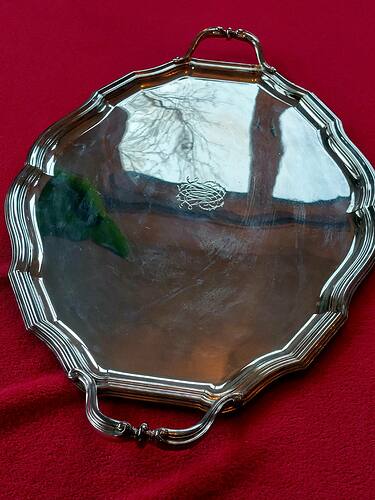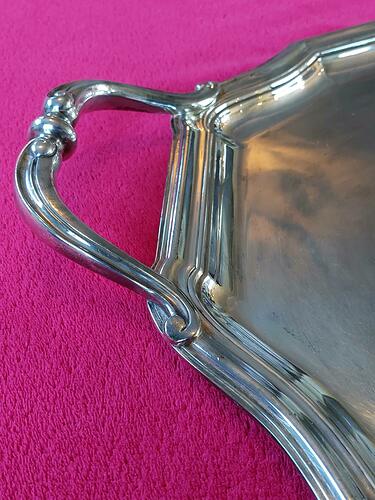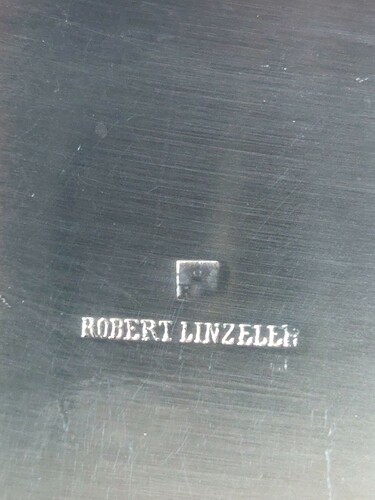I have a giant silver Platter, it is 75 cm long and 45 cm wide the weight is more than 4000 grams! i Bought it in an impulse from a private owner, assuming it was sterling silver and payed a market conform price
I can identify the silversmith and his personal mark but it does not have a silver grade mark
the maker is Robert Linzeler, is it common for such a peace not to have a silver grade mark, or should i be worried it is not real silver?
I cant find anything of him making plate silver
i attached some photos
Hi,
The maker is French from XIX/XX.
His sign is crown over his initials.
Unfortunately, the sign is in rectangle, which means this is silver plate and not the solid silver.
Regards,
G.
I think you should definitely have this properly tested although I’m pretty sure it is electroplated and not silver. Linzeler, as far as my research tells me, was a Parisian silversmith. The French had a well-regulated system for marking silver and none of the expected French silver marks are apparent on your platter. French electroplate makers’ marks were square-shaped as in your picture, as opposed to the silver equivalents which were in a diamond. You can see Linzeler’s silver mark here.
Phil
Thank you for your reply,
I am still hoping it is not plated, i have just ordered some test fluid.
I tried with a magnet and tht was good, not magnetic.
I scratched into the back of the plate, and all the same color no copper color or difference
But i guess i will know when the fluid is here!
Thank you
thank you
If you are using acid to test you must dig deeply enough to reach below any surface plating. Note that a base metal will very likely be a white metal such as nickel-silver, a pewter-like alloy so you might not see a clear junction.
Thank you!
I will dig a litle hole!
I am still hoping it is silver, nowere on internet does ther exist silverplate/epns made by robert linzeler, it does not exist, or am i wrong?
Hi,
Have no illusion. It is marked plate so it is plate. Digging a hole may damage otherwise nice item. Testing it directly with acid may leave an ugly stain. Testing it with touchstone and acid most probably will leave you with the false impression that it is silver if the silver layer is thick enough.
Regards,
G.
P.S. If you are a bit of experimenter and want to conduct a non damaging test, check how much your tray weighs when completely immersed in water. That enables you to calculate the unit mass by the Archimedes law… Then you will see if it is close to silver.
Regards,
G.


